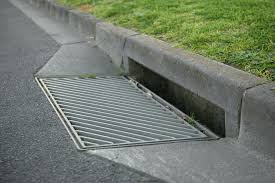In the bustling urban landscape, where the rhythm of life is set by the pulse of the city streets, seemingly inconspicuous elements like street gutters and curbs play a crucial role in maintaining order and facilitating the smooth flow of daily life. These unassuming features not only enhance the aesthetics of the urban environment but also serve vital functions that contribute to the overall functionality and safety of the city. We will delve into the significance of street gutters and curbs. Exploring their historical evolution, current applications, and their role in shaping the urban experience.
Historical Evolution:
Street gutters and curbs have been integral to urban planning for centuries. The earliest urban civilizations, such as ancient Rome. Utilized rudimentary forms of drainage systems to manage rainwater and prevent flooding in streets. Over time, these systems evolved, and by the Middle Ages, many European cities incorporated cobblestone curbs to delineate pathways and control the flow of pedestrian and vehicular traffic.
The advent of industrialization in the 19th century brought about significant changes to urban landscapes. With the expansion of cities and the need for more sophisticated infrastructure. Improved materials and engineering techniques allowed for the development of more efficient drainage systems and curbing solutions. The iconic granite or concrete curbs we see today began to take shape, creating a distinction between sidewalks and roadways.
Contemporary Applications:
In modern urban planning, street gutters and curbs have evolved to meet the demands of growing populations and increased vehicular traffic. Stormwater management is a critical consideration, and well-designed drainage systems ensure that rainwater is efficiently channeled away from streets to prevent flooding and erosion. Curbs serve as physical barriers, guiding water toward gutters and preventing it from flowing onto sidewalks or roadways.
Moreover, curbs play a vital role in pedestrian safety by providing a clear separation between walkways and roads. This not only prevents accidents but also enhances the overall pedestrian experience, encouraging people to explore and engage with the urban environment. In addition, curbs act as a visual cue for drivers, delineating parking spaces and regulating traffic flow.
Environmental Impact:
Beyond their functional roles, street gutters and curbs contribute to environmental sustainability. Effective stormwater management reduces the risk of water pollution. As contaminants from roads and other surfaces are directed away from natural waterways. Moreover, the proper design and maintenance of these features can help mitigate the urban heat island effect by promoting water infiltration and reducing surface temperatures.
Conclusion:
Street gutters and curbs may go unnoticed in the daily hustle and bustle of urban life. But their impact on the functionality, safety, and aesthetics of cities is undeniable. As we continue to grapple with the challenges of urbanization, sustainable development, and climate change. The role of these seemingly simple elements becomes increasingly important. Urban planners, engineers, and communities must work together to ensure that our streets are not only efficient and safe but also contribute to a more sustainable and enjoyable urban experience.

